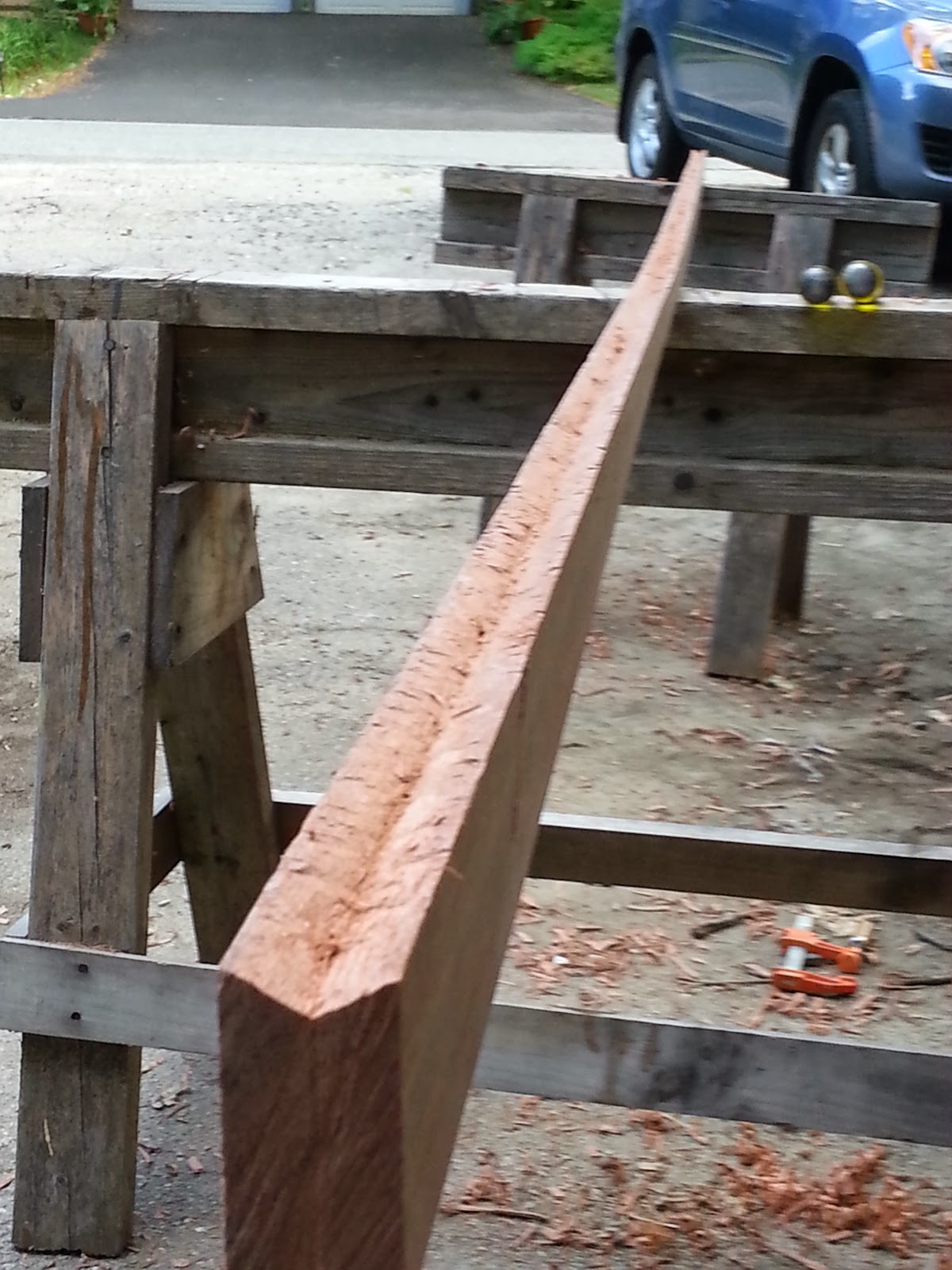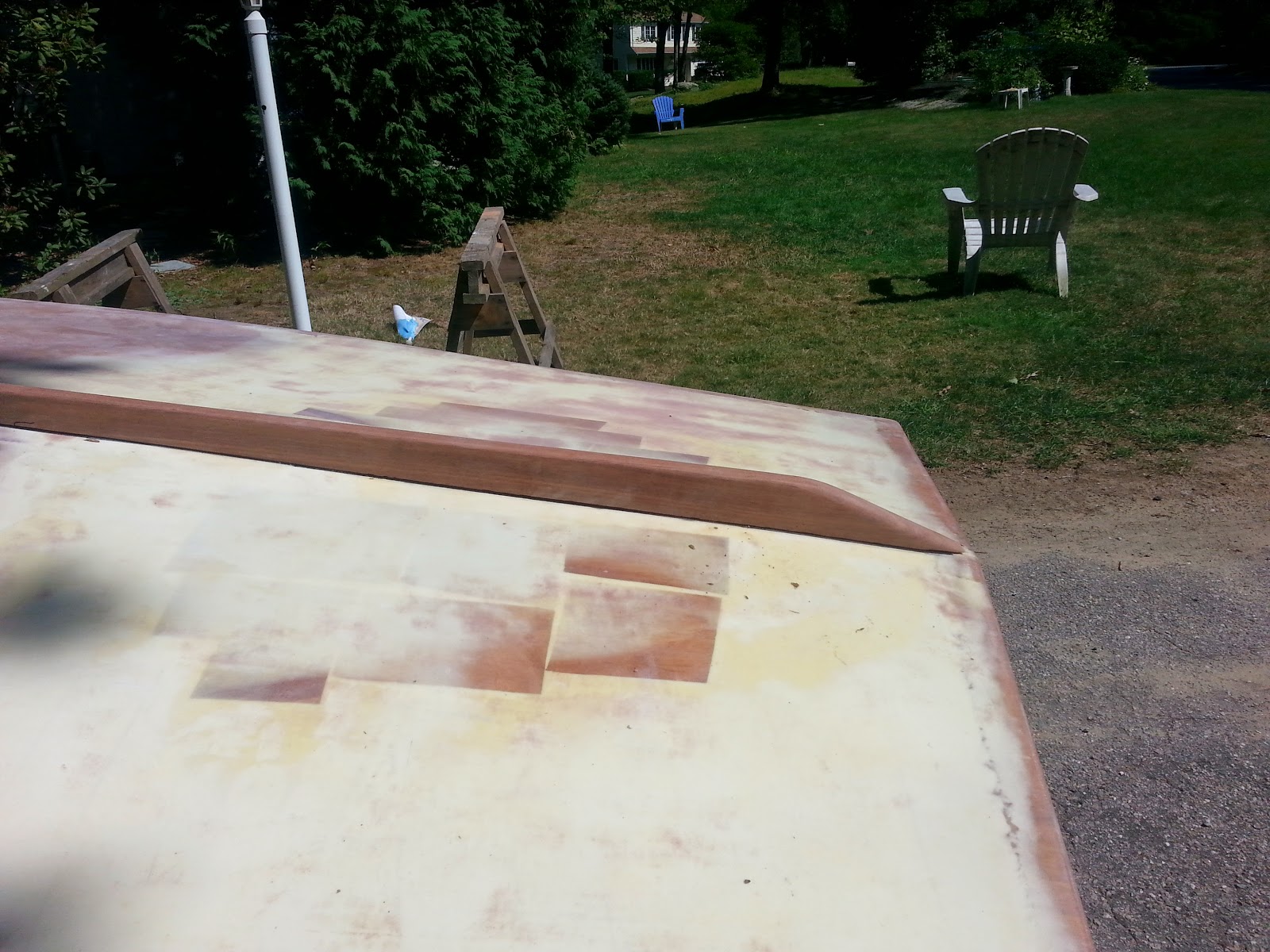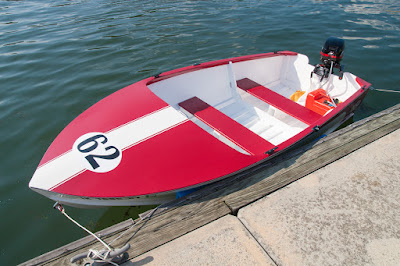August 28, 2014
Being tired of sanding, I switched gears to the keel. The idea is to start with a lot of wood and wind up with a little less. The keel on this boat is designed to take the weight of the boat on and off the trailer, proved something to hit a beach with, and add a little more stiffness to the hull. (additionally, it will help track the boat with the centerboard retracted).
The plans have some conflicting information. On the instruction sheets, the keel is described as being 3/4" and on the plans it measure 1"x1". I went with this as I can always make it smaller, but not bigger if needed.
It took a few times of reading through the description of how to scribe the keel until I saw it clearly as to what should happen. Basically, take a 1X2 plank (in my case, mahogany), and scribe a line down the middle. Then place the 14 foot plank edgewise on the hull, with a helper holding it down against a block the same thickness as the keel. Now, take another block of similar dimension and scribe a line along the board from the stern until it meets the other lines that mark the forward part of the plank. I wish I took a photo, but the plans describe it well enough. You are left with a plank that is 2" wide at the stern and tapers to 1" about 4-6 forward of that. When it is all cut out, the plank will lie relatively flat against the hull, while the last 6 of the keel are straight. The forward part will need to be shaped for better hydrodynamics as a blunt block is not too terribly efficient as shape.
Then, you need to cut a groove into the entire thing so that it fits flush against the hull. All this will be held in place with screws and goop. A final step is to fair it into the hull with fairing compound and then add a stainless rub strip to the bottom and chine edges. These are to be sacrificial in nature. Cutting the groove is a chore and I am sure there are power tools that could do it. My method was to cut a 1/4" X 1/4" deep groove from stem to stern along the keel bottom with a chisel, This is followed up with a 3/8" chisel to enlarge it. Next, I knock down the sides of the V with a sharpened block plane. Everything is then shaped up with the 3/4" chisel to make the V consistent. This took two hours. One hour was spent figuring out this method. The other hour of actual consistent work.
 |
| V groove from stern to stem. |
 |
| Tools used to cut the V groove |
 |
| Keel set temporarily in place to see how it fits. Like a glove is the answer! |
The sad news is tomorrow it is back to more sanding and filling until the boat is paint ready.
Update - 9-4-14
We finally have the keel in place. After working upside down from the inside while my daughter aligned the keel on the outside, we got all the temporary screws in place to prep for the application of the epoxy filler and glue. It was at this time, my daughter asked a poignant question, "Why dont we put the boat on its side for this, it would be way easier, yes?" So we rolled it off the cradle on onto its side. And yes, it is way easier. photos below.
 |
| Boat is rolled out the garage yet one more time. Keel is temporarily held in place with drywall screws. |
  |
| Keel has been shaped to final profile and aligned with a sharpie marker marking both sides. |
 |
| Screws are sticking pround of the forward part where the keel tapers, holes and front get blended into hull so this will not be an issue. No one will see it when the paint drys. |
 |
| We move the boat off the cradle by moving the bow off the cradle so that one side is still in contact with the cradle, and then the stern. An easy tip to vertical from there. The boat is supported by two stout sawhorses. |
 |
| These sawhorses do the trick! |
 |
| Katie applies epoxy grout to the V groove. I am the mixer in the garage, making more batches of grout. |
 |
| After the grout has been applied, I work the electric drill from this side, while Katie ensures the keel is aligned with our sharpie marks. |
 |
| This is the finished product, We will let it set overnight and then i will remove the drywall screws. |
Sept 5, 2014
We tilted the boat back on its side (son helped on his way to work), and I removed the screws. Then, replaced the boat on the form and did some clean up and final shaping of ends. It came out nice. Paint is ordered. Next, is the CB gasket (not on the plans).




















































